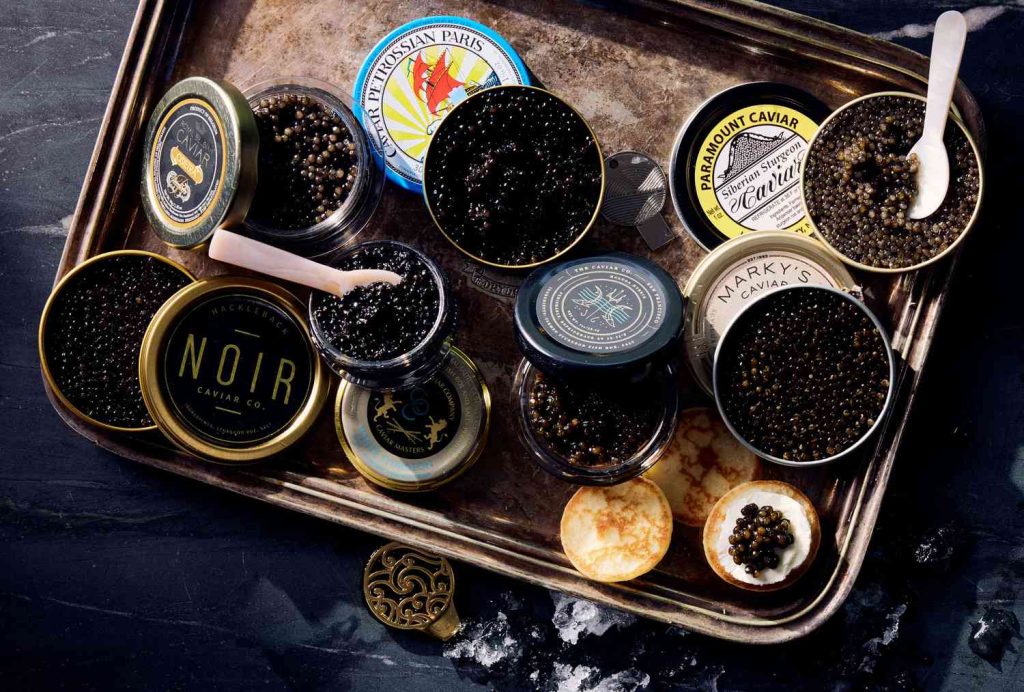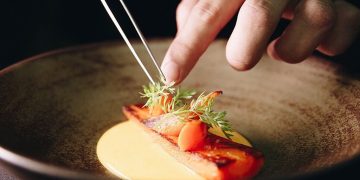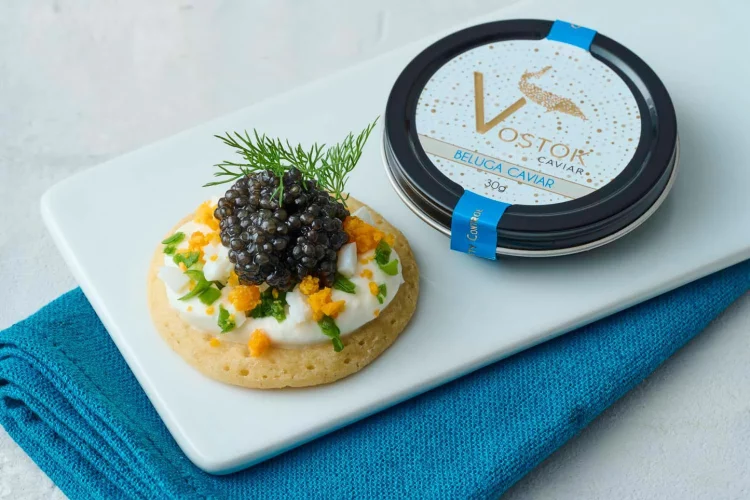Introduction: Why Caviar Remains the Gold Standard of Luxury Foods
Caviar is often considered the ultimate indulgence, a delicacy that has captivated the palates of the rich and powerful for centuries. Whether served in opulent restaurants or on the private yachts of billionaires, it represents more than just a food item; it is a symbol of status, refinement, and taste. Its smooth, buttery texture, coupled with its rare and exclusive nature, has made it the gold standard of luxury foods.
The allure of caviar is more than skin deep. It transcends mere sustenance, offering a multisensory experience that few other foods can match. Its delicate flavor profile, often described as briny, creamy, and faintly nutty, can transport even the most discerning eater into a world of extravagance. When paired with the finest wines or artisanal vodkas, caviar becomes a culinary journey—one that resonates deeply with the affluent and those seeking the epitome of high-class dining.
But what is it about caviar that has secured its place at the pinnacle of gastronomic luxury? In this article, we will explore the reasons behind caviar’s enduring appeal, dive into the various types of caviar, examine the complex process of harvesting, discuss the art of pairing it with drinks, and ultimately seek to understand why the finest caviar commands prices that rival some of the world’s most precious commodities.
Types of Caviar: Beluga, Osetra, Sevruga—What Makes Them Different?
Caviar is not a one-size-fits-all luxury. It exists in various forms, with each type offering unique flavors, textures, and nuances. The three most famous types of caviar—Beluga, Osetra, and Sevruga—are harvested from different species of sturgeon, and each offers its own special experience for connoisseurs.
1. Beluga Caviar
Beluga is arguably the most coveted and rare type of caviar. Derived from the Beluga sturgeon, which is primarily found in the Caspian Sea, Beluga caviar is known for its large, soft eggs and rich, creamy flavor. Its color ranges from pale silver to dark gray, and its texture is delicate, often described as melting in the mouth.
Due to overfishing and environmental concerns, Beluga sturgeon populations have dwindled, and the caviar produced from them has become incredibly rare. As a result, Beluga caviar commands some of the highest prices in the world. In fact, some top-quality Beluga caviar can sell for as much as $10,000 per kilogram, depending on the quality and provenance.
2. Osetra Caviar
Osetra caviar is produced by the Osetra sturgeon, also found in the Caspian Sea. It is smaller than Beluga caviar but still large enough to distinguish itself from the finer, more delicate Sevruga caviar. The flavor profile of Osetra is more complex, with a nutty, buttery taste and a firmer texture. Its color ranges from golden to dark brown.
Osetra is highly prized for its balance between richness and delicacy, making it a favorite among those who appreciate a nuanced experience. While not as rare as Beluga, Osetra caviar still carries a high price tag—ranging from $5,000 to $7,000 per kilogram for top-grade varieties.
3. Sevruga Caviar
Sevruga caviar is harvested from the Sevruga sturgeon, which is smaller than the Beluga and Osetra species. The eggs are tiny and delicate, with a more intense flavor than the other types. Sevruga caviar offers a briny, sharp taste that is preferred by some aficionados for its boldness. The texture is firmer, and the color ranges from light gray to dark black.
While Sevruga caviar is often considered less luxurious than Beluga or Osetra, it remains a staple in the world of fine dining. Sevruga caviar is typically more affordable, costing around $2,500 to $4,000 per kilogram for high-quality selections.
4. Hybrid Varieties and Sustainability
In recent years, hybrid caviar, produced by crossbreeding different types of sturgeon, has gained popularity. These hybrids often combine the best characteristics of multiple species, offering more diverse flavor profiles and textures. Additionally, efforts to cultivate sturgeon in sustainable, environmentally responsible ways have led to the rise of farmed caviar, which seeks to alleviate pressure on wild sturgeon populations.
These hybrid and farmed varieties may be less expensive, but they still offer a level of luxury that appeals to high-end consumers seeking to experience caviar at a more accessible price point.

How Caviar Is Harvested: The Delicate Process Behind the World’s Most Coveted Delicacy
The process of harvesting caviar is as intricate and meticulous as its taste. The journey from the sturgeon to the plate involves several stages, each requiring expert knowledge and precision. Here’s how it all unfolds:
1. Sourcing the Sturgeon
Caviar production begins with the sturgeon. These ancient fish are known for their long lifespans, sometimes living up to 100 years, and their slow growth rates. Because the quality of caviar depends on the age and health of the sturgeon, most caviar farms breed these fish in carefully controlled environments to ensure they are able to mature properly. The best caviar comes from sturgeon that are at least 12 to 15 years old.
2. The Harvesting Process
Harvesting caviar is an incredibly delicate process. Traditionally, sturgeon were killed to collect their roe, but modern caviar farms often employ a more humane method known as “stripping.” During stripping, the roe is gently removed from the female sturgeon, who is then returned to the water to continue her life cycle.
The roe is then carefully processed to remove impurities and is salted to preserve its delicate texture. The type and amount of salt used is crucial—too much salt will overpower the natural flavor of the eggs, while too little will cause the roe to spoil too quickly.
3. Packaging and Aging
Once the roe has been properly salted, it is placed in small tins, ready for packaging. Some types of caviar are aged to deepen the flavor, while others are intended to be consumed as fresh as possible. The packaging process is critical to ensuring the caviar remains fresh, as exposure to air can degrade its quality.
Pairing Caviar: Best Wines, Vodka, and Other Pairings to Enhance the Experience
Caviar is not only about the caviar itself but also about the experience of savoring it in its perfect setting. One of the most important aspects of this experience is choosing the right beverage to complement the delicate flavors of the caviar.
1. Champagne and Sparkling Wines
Champagne has long been the preferred pairing for caviar, with the crisp, acidic bubbles of the wine cutting through the richness of the roe. For a perfect match, many connoisseurs recommend a high-quality Brut or Blanc de Blancs Champagne, which enhances the natural flavors of the caviar without overwhelming them. Other sparkling wines, such as Prosecco or Crémant, also work well, though they tend to have a slightly lighter profile.
2. Vodka
In Russia, the birthplace of caviar, it is traditional to pair the delicacy with vodka. The clean, neutral flavor of a premium vodka allows the caviar’s taste to shine without competing with it. Vodka served ice-cold enhances the texture of the caviar, making each bite even more refreshing. Brands like Beluga and Stolichnaya Elit are popular choices among caviar lovers.
3. White Wine
A crisp, dry white wine like Chardonnay, Sauvignon Blanc, or a Chablis can complement the subtle flavors of caviar beautifully. The acidity and minerality of these wines balance the briny, creamy texture of the roe, creating an exquisite harmony between the two.
4. Other Pairings
While champagne, vodka, and wine are the most common pairings, many top chefs also experiment with non-alcoholic accompaniments, such as fresh blinis (small pancakes), crème fraîche, or even eggs and delicate canapés. These additions elevate the caviar experience, offering an array of textures and flavors that accentuate the roe’s own qualities.
The Price of Perfection: Why the Finest Caviar Can Cost More Than Gold
Caviar has always been a luxury good, but in recent years, the price of the finest varieties has reached eye-watering heights. For example, Beluga caviar can cost upwards of $10,000 per kilogram, and even lesser varieties like Osetra and Sevruga are priced in the thousands.
Why does caviar command such exorbitant prices? Several factors contribute to its high cost:
- Rarity: The decline of wild sturgeon populations and the extensive labor involved in harvesting and processing roe have driven the prices of the finest caviar to astronomical levels.
- Demand: As the global elite continues to crave the finest delicacies, the demand for caviar remains high, pushing up its price even further.
- Labor-Intensive Production: The painstaking process of harvesting, salting, and packaging caviar adds to its overall cost. Skilled labor is required at every stage, from collecting the roe to ensuring its perfect preservation.
- Provenance and Quality: Caviar’s price is often dictated by its origin. Authentic caviar from renowned regions such as the Caspian Sea or special farms in France and Italy commands premium prices.
Interestingly, some of the most expensive caviar in the world can cost more than gold by
weight, further cementing its status as a luxury of choice for the rich.
Conclusion: Will Caviar Continue to Reign as the Luxury of Choice for the Rich?
Caviar’s long-standing association with wealth, luxury, and refinement shows no sign of waning. As the global appetite for exclusivity continues to grow, so too does the demand for this rare delicacy. While the future of caviar may be influenced by sustainability concerns and shifting cultural trends, its status as a symbol of opulence is likely to remain intact.
For those fortunate enough to indulge, caviar offers more than just a taste—it’s an experience, a statement, and an essential part of a life lived in pursuit of the finest things. In a world where luxury is often defined by rarity and craftsmanship, caviar remains the ultimate indulgence of the elite, a golden standard of taste and elegance that will likely continue to captivate the rich for generations to come.
















































